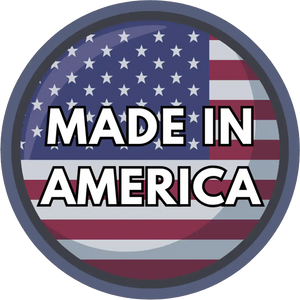Choosing the right furniture for your child is more than just filling a room — it’s about creating an environment that supports growth, confidence, and independence. One of the most essential pieces in a Montessori-inspired space is the bookshelf.
It’s not just storage; it’s an invitation for your child to explore stories, make choices, and develop a love for reading from an early age.
At Dannico Woodworks, we believe that thoughtfully designed furniture can make a world of difference in how children learn and interact with their surroundings. That’s why our Montessori Bookshelf Collection is crafted with both function and child development in mind — promoting curiosity, independence, and a sense of ownership in every child.
If you’re considering adding a Montessori bookshelf to your child’s room or play area, here’s everything you need to know to make the perfect choice.

A Montessori bookshelf should embody these principles by being accessible, organized, and inviting.
Key Features of a Montessori Bookshelf
Accessibility
In a Montessori environment, accessibility is key. The bookshelf should be at your child’s height, allowing them to independently choose and return books. This promotes autonomy and decision-making skills from an early age.
Simplicity and Organization
Montessori bookshelves often have open shelving, which makes it easy for children to see their book options without feeling overwhelmed.
A clutter-free presentation encourages children to focus and make thoughtful choices.
Aesthetic Appeal
While functionality is critical, the visual aspect should not be overlooked. A bookshelf that blends with your home’s décor and is aesthetically pleasing can enhance the overall ambiance of the learning space, making it more inviting for your child.
Types of Montessori Bookshelves
 Floor-Level Shelves
Floor-Level Shelves
Floor-level shelves are perfect for infants and toddlers as they can easily crawl or walk to access their books.
These shelves typically have a low profile and are designed to keep a limited number of books within easy reach.
Multi-Tiered Shelves
For older children, multi-tiered shelves provide more storage options while still maintaining accessibility.
These shelves can be used to categorize books by theme, size, or reading level, which helps children develop organizational skills.
Rotating Bookshelves
Rotating bookshelves add a fun twist to traditional shelving. They allow children to spin the shelf to view different book selections, encouraging exploration and engagement with their collection.
Choosing the Right Material
The material of the bookshelf is crucial for both durability and safety. Here are some popular options:
Solid Wood
Solid wood bookshelves are a classic choice due to their sturdiness and timeless appeal. They are often more durable and can withstand the wear and tear of everyday use. Additionally, wood can be stained or painted to match your home’s interior.
Engineered Wood
Engineered wood, such as MDF or plywood, offers a more budget-friendly option without sacrificing quality. These materials are lightweight and can be crafted into various designs and finishes.
Eco-Friendly Materials
If sustainability is a priority, consider bookshelves made from bamboo or reclaimed wood. These materials are environmentally friendly and contribute to a healthier planet for future generations.
Safety Considerations
Safety is paramount when selecting a bookshelf for your child. Here are some safety tips to keep in mind:
- Sturdy Construction: Ensure the bookshelf is stable and doesn’t tip over easily. If necessary, anchor it to the wall for added security.
- Smooth Edges: Look for bookshelves with rounded edges to prevent injury.
- Non-Toxic Finishes: Choose bookshelves with non-toxic paints and finishes to protect your child from harmful chemicals.
Personalizing Your Montessori Bookshelf
Once you’ve chosen the perfect bookshelf, it’s time to personalize it. Here are some ideas to make your child’s bookshelf uniquely theirs:
Book Rotation
Rotate books regularly to keep your child’s interest piqued. This not only refreshes their reading options but also helps them appreciate different genres and topics.
Display Favorites
Use the top shelf to display your child’s current favorite books. This makes them easily accessible and celebrates their evolving interests.
Themed Organization
Organize books by theme, such as animals, adventure, or family. This helps children navigate their collection and encourages thematic exploration.
Incorporate Decor
Add small decorative items like plants, picture frames, or bookends to make the bookshelf more inviting. However, ensure these items don’t clutter the space or become distractions


